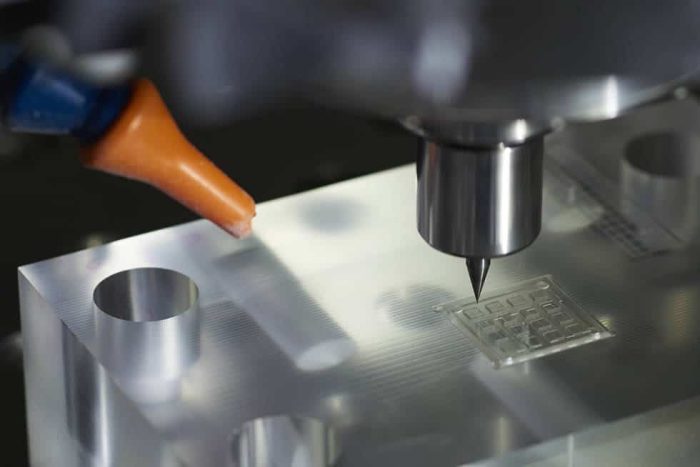Discover how our high-strength ceramics prevent component failure in high-stress environments, reducing downtime and maintenance costs for industries like automotive, aerospace, and energy.
High strength in ceramic materials refers to their ability to bear significant mechanical loads or stresses without cracking, breaking, or undergoing permanent deformation. Unlike metals, which can plastically deform under stress, ceramics with high strength typically exhibit exceptional rigidity and resistance to bending or fracturing.

Why It Matters:
Increased Reliability:
Components made from high-strength ceramics are less prone to sudden failures, which helps maintain continuous operation in mission-critical systems.
Longer Lifespan:
High strength often correlates with increased wear resistance and durability, leading to a longer service life and reduced replacement costs.
Reduced Weight and Improved Efficiency:
Ceramics can provide high strength without adding excessive mass. This is especially valuable in industries like aerospace or automotive, where weight reduction is crucial for energy efficiency.
Enhanced Safety:
In applications ranging from medical implants to industrial machinery, using a high-strength ceramic reduces the risk of catastrophic failure, improving overall safety.
Material Composition:
Advanced ceramics (e.g., zirconia, silicon nitride, silicon carbide) have crystal structures that naturally resist crack propagation.
Dense Microstructure:
Through sintering and advanced manufacturing methods, porosity is minimized, which greatly increases strength.
Grain Size Control:
Smaller and more uniform grains typically lead to higher strength, as there are fewer internal flaws that can initiate cracks.
Flexural Strength (3-Point or 4-Point Bending Test):
Fracture Toughness (KIC):
Compressive Strength:
The table below provides a high-level comparison of typical strength values for some of our most popular ceramic materials. Actual performance may vary based on part geometry, processing, and finishing methods.
| Material | Typical Flexural Strength (MPa) | Fracture Toughness (MPa·m^1/2) | Density (g/cm^3) |
| Zirconia (ZrO₂) | 900 – 1200 | 7 – 10 | 5.6 – 6.1 |
| Alumina (Al₂O₃) | 300 – 600 | 3 – 4 | 3.8 – 4.0 |
| Silicon Nitride (Si₃N₄) | 600 – 1000 | 5 – 7 | 3.1 – 3.3 |
| Silicon Carbide (SiC) | 400 – 700 | 3 – 4 | 3.1 – 3.2 |
Key Takeaways:
Still unsure which material is best? Get a free recommendation.
Automotive & Transportation
Industrial Machinery
Aerospace & Defense
Medical Devices
Challenge:
A chemical processing company faced frequent breakdowns of metal impellers due to corrosion and mechanical stress. Each failure led to costly plant shutdowns.
Solution:
They switched to custom zirconia impellers featuring exceptional corrosion and high strength properties.
Outcome:
Explore More Case Studies or Contact Us to discuss a solution tailored to your industry.
We specialize in R&D, manufacturing, and precision finishing of high-strength ceramic parts. Here’s what sets us apart:
Advanced Sintering & Forming Techniques
State-of-the-Art Machining
Quality Assurance & Certifications
Scalable Production
Expert Engineering Support
While “high strength” measures the overall load a ceramic can withstand, “high hardness” refers to resistance against scratching or indentation. High-strength ceramics may also be hard, but the two properties serve different functions in application design.
In many cases, yes. However, you must consider other factors like cost, thermal expansion, and the need for impact resistance. Our experts can help determine if a ceramic is a suitable replacement or if a hybrid solution is better.
Yes, many advanced ceramics that are engineered for high strength—such as silicon nitride (Si₃N₄) and silicon carbide (SiC)—also exhibit excellent thermal stability.
Ceramics are generally more brittle than metals, but certain grades (like zirconia-toughened ceramics) offer improved fracture toughness, mitigating brittle failure risks.
Depending on complexity, lead times can range from 4 to 8 weeks. Prototyping might be faster if we have standard tooling or shapes available.
This depends on your operating environment, mechanical load, temperature range, and chemical exposure. We recommend scheduling a consultation with our engineering team to select the optimal material.
Still have more questions?
Send us an inquiry or check out our blog for deeper dives into ceramic materials and industry trends.
Our advanced ceramic solutions can significantly enhance the reliability, safety, and efficiency of your components or systems. Let’s discuss how high strength can address your specific challenges and requirements.

We will get back to you within 12 hours.
We will be in touch within 12 hours. Your intellectual property is 100% secure with us.